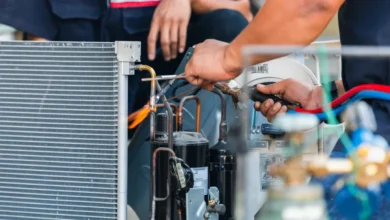Transforming Classrooms with Social-Emotional Learning Activitie

Modern educational environments now concentrate on Social-Emotional Learning (SEL) because educators understand its relationship to academic success. The academic performance of students strongly depends on their emotional health, which teachers and parents both recognize.
Hence, adding empathy, mindfulness, and kindness to educational material allows teachers to boost both student achievement results and their classroom behavior outcomes. SEL educational programs help increase performance by 11 percentile points and enhance emotional strength, according to research data.
Therefore, social-emotional learning programs find effective integration in classroom activities by promoting personal insight through strategies that do not require additional lesson time.
A combination of mindfulness and compliment circles as part of SEL implementation leads to an educational environment that supports better emotional and academic success. Here are 10 effective SEL strategies that can enhance learning.
What is Social-Emotional Learning (SEL)?
Through social-emotional learning, children and adults obtain vital competencies that they use to:
- Understand and manage emotions
- Set and achieve positive goals
- Feel and show empathy for others
- Establish and maintain healthy relationships
- Make responsible decisions
According to the Collaborative for Academic, Social, and Emotional Learning (CASEL), there are five essential competencies that make up social emotional learning activities:
- Self-Awareness: Recognizing emotions, strengths, and limitations
- Self-Management: Regulating emotions, thoughts, and behaviors
- Social Awareness: Recognizing different perspectives and expressing empathetic behaviors toward others
- Relationship Skills: Create strong relationships through effective communication methods
- Responsible Decision-Making: Making ethical, constructive choices
10 Engaging SEL Activities for the Classroom
1. Emotion Check-Ins
Objective: Build self-awareness and emotional vocabulary
Activity: The day should start with students using a feelings wheel for emotional identification, followed by sharing their chosen emotions through an emotion chart. Such activity allows students to share their emotions, which helps peers develop empathy skills.
2. Mindfulness & Breathing Exercises
Objective: Teach self-regulation and stress management
Activity: It includes a 2-minute mindfulness practice, which students can either start or finish their class with. This practice helps relieve stress and enhance overall well-being.
3. Gratitude Journals
Objective: Foster positivity and emotional resilience
Activity: Students must create a weekly list of three things they feel grateful for during the class period. According to professionals, practicing gratitude results in improved mood, better motivation, and enhanced social bonds between people.
4. Role-Playing Social Scenarios
Objective: Develop empathy and conflict-resolution skills
Activity: This activity includes showing real-life situations like bullying and peer pressure, followed by student enactment of both constructive and destructive reactions. Group members should discuss the evaluated outcomes together.
5. Collaborative Art Projects
Objective: Strengthen teamwork and creative expression
Activity: Students should participate in group assignments that include making murals or storyboards with various members contributing to the final project. Such practice develops both group work and positive interpersonal approaches between students.
6. Compliment Circles
Objective: Enhance student self-esteem and social consciousness
Activity: Students should form a circular arrangement and compliment their classmates. Such activities help students recognize and promote friendly peer relations.
7. Problem-solving S.T.E.P. Model
Objective: Encourage responsible decision-making
Activity: The S.T.E.P. method, consisting of Stop, Think, Evaluate, and Proceed, requires instruction from students to help them determine actions before decisions.
8. Classroom Community Meetings
Objective: Strengthen relationships and democratic participation
Activity: This activity involves students participating in meetings that involve classroom issue discussions, idea exchange, and voting on proposed resolutions.
9. Empathy Mapping
Objective: Deepen understanding of others’ feelings
Activity: Empathy mapping consists of documenting through drawings or writing the emotional experience of a new student who faces frustration from their teacher.
10. Goal-Setting & Reflection
Objective: Promote self-management and a growth mindset
Activity: In this activity, students need to create both academic and personal objective goals weekly, and they should evaluate their progress each Friday.
How Teachers Can Successfully Implement SEL
To effectively implement SEL, teachers should incorporate these concepts naturally into their daily programs because treating SEL as independent teaching is insufficient.
Here’s how it can be incorporated:
Model SEL Skills
Students learn by example. Learning takes place naturally when teachers display their empathy while coping with stress and resolving conflicts in controlled and relaxed ways.
Embed SEL in Academics
Teachers should integrate SEL practice within their academic subjects, such as literature, where they examine the emotional reactions of characters while teaching perspective-taking in history, along with exploring ethical challenges in science classes.
Partner with Parents
Schools should provide families with SEL strategies for additional reinforcement at home.
The Future of SEL in Education
The ongoing emphasis on whole-child growth in schools will increase the impact of SEL teaching methods that create students who are ready for the future.
Emerging trends include:
- Educational technologies based on AI and social-emotional learning capabilities provide chatbots as emotional processing tools for students.
- No two students are the same, so trauma-informed teaching follows specific SEL strategies created for students who have gone through adverse childhood experiences.
- Multiple educational institutions across the world are choosing to implement the Life Skills Education framework developed by UNICEF.
Conclusion
People are mistaken when they consider social-emotional learning as just a passing trend because it actually transforms the core foundations of education. Teachers who implement SEL in their classrooms prepare students with long-lasting personal abilities in problem-solving, emotional strengths, and resilience.
The impact?
Stronger academic performance, healthier relationships, and emotionally intelligent leaders for tomorrow’s world.
The best part?
SEL practice needs neither fancy equipment nor costly investments because it mainly depends on planned regular implementation. Whether through mindfulness, collaborative projects, or open discussions, every small step fosters a kinder, more inclusive learning environment.
Educational development within society has a dual purpose that extends beyond knowledge transfer into psychological student development. The core implementation of SEL programming should become standard practice in all educational environments.
Ready to start?



